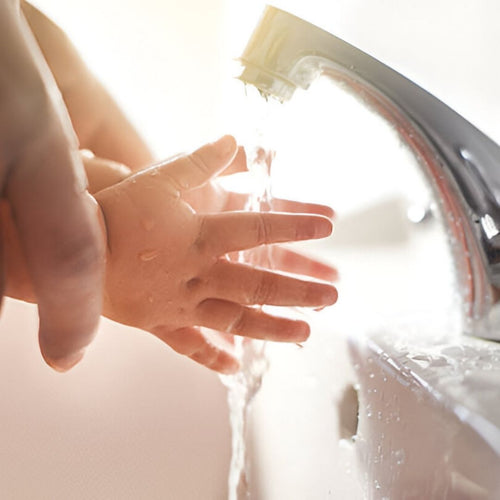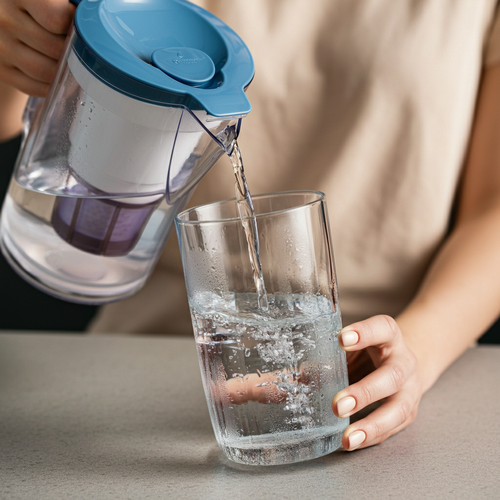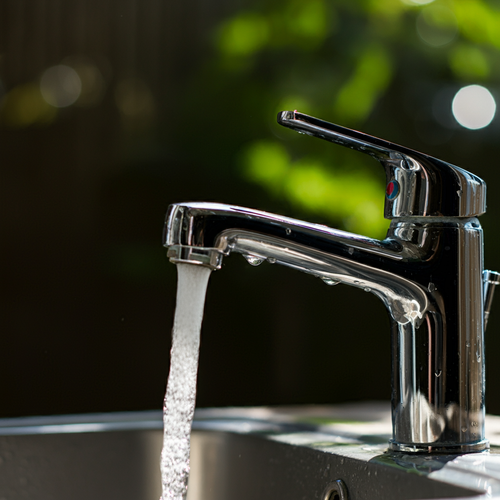Adding salt to your water softener is a crucial task to ensure the system continuously provides your home with luxuriously soft water. The salt is vital in a process called ion exchange, which is how your water softener removes hardness minerals and gives you that silky-smooth water feel. Think of it as keeping your water softener's "engine" fueled and ready to work.
Hard water is a common problem characterized by high levels of calcium and magnesium. These minerals cause issues like soap scum, spotty dishes, dry skin, and can even damage your plumbing and appliances over time. A water softener saves the day by using specialized resin beads to swap those troublesome minerals for sodium, effectively softening your water supply.
Why Your Water Softener Needs Salt
Inside your water softener is a tank filled with tiny resin beads. These beads have a negative charge that attracts positively charged hardness minerals like calcium and magnesium. As hard water flows through the resin, the minerals cling to the beads, and softened water flows out to your home.
However, the resin beads can only hold onto so many minerals. This is where salt (sodium chloride) comes in. When your softener regenerates, it floods the resin tank with a concentrated salt solution. The sodium ions knock the calcium and magnesium off the beads, flushing them down the drain. The resin beads are then recharged with sodium, ready to soften another batch of hard water.
Types of Water Softener Salt
Choosing the right type of salt makes a difference:
- Salt Crystals: The most common and budget-friendly option. They dissolve readily and are a reliable choice for most softeners.
- Salt Pellets: These are compressed salt crystals, making them less prone to clumping or forming what's called a "salt bridge". Pellets might be ideal if you've had issues with your salt solidifying in the tank.
- Potassium Chloride: An alternative for individuals on sodium-restricted diets. Always consult with your doctor before making this switch.
Use high-purity salt (at least 99.5% purity) to keep your system running smoothly. Some brands offer specialized salts or additives, but these may not be necessary for all softeners.
Step-by-Step: Adding Salt to Your Water Softener
- Check the Salt Level: Open the lid of your brine tank (often a separate tank next to the main softener). Ideally, the salt should be a few inches above the water line.
- Choose Your Salt: Select the appropriate salt type for your softener and needs.
- Add the Salt: Carefully pour the salt into the brine tank until it's about three-quarters full. Avoid overfilling, which can cause problems.
- Monitor and Refill: Check the salt level every month or two and replenish it as needed.
Troubleshooting Common Issues
- Salt Not Dissolving ('Salt Bridge'): A hard crust can form on top of the salt, preventing water from reaching the salt below. Gently break this up with a long-handled broom or similar tool (be cautious around internal components).
- Mushy Salt: Switch to salt pellets or use salt designed for your specific softener if it recommends it.
- Water Softener Not Regenerating: Check your settings, and if necessary, manually initiate a regeneration cycle according to your softener's instruction manual.
Tips for Optimal Water Softener Maintenance
- Regular Salt Checks: Set a schedule based on your household water usage and softener size.
- Monitor Your Water: Look out for signs of hard water returning and unexpected spikes in your water bills, which could suggest a softener issue.
- Professional Servicing: Schedule an annual inspection to catch potential problems early and maximize the lifespan of your system.
FAQs
How often should I add salt to my water softener?
This depends on your water hardness, household water usage, and the size of your softener. Most homeowners need to refill their brine tank every 1-2 months. Check your softener's manual for specific recommendations.
Can I use regular table salt in my water softener?
No, table salt contains impurities that can clog your system. Always use high-purity salt specifically designed for water softeners (at least 99.5% purity).
My salt isn't dissolving, what should I do?
There might be a "salt bridge" – a hard crust on top of the salt. Carefully break it up with a long object, avoiding damage to the tank. If the issue persists, switch to pellet salt or consult your softener's manual.
What's the difference between water softener salt crystals and pellets?
Salt crystals are the most common and affordable, while pellets are compressed and less prone to clumping or forming a salt bridge. Choose the best option based on your softener's recommendations and your experiences.
Key Takeaways: Mastering Water Softener Salt for Optimal Results
- Maintaining the right salt level is essential for consistently soft water. Salt allows your softener to continuously remove hardness minerals, protecting your home and appliances from their damaging effects.
- Choosing the right type of salt matters. While salt crystals are widely suitable, salt pellets may be a better choice if you encounter issues like clumping or salt bridges.
- Regular monitoring and troubleshooting ensure your softener works as intended. Checking the salt level, addressing any dissolving issues, and scheduling annual maintenance will help keep your water softener functioning at its best.
Ready to experience the benefits of luxuriously soft water?
Contact the experts at SoftPro Water Systems for a personalized assessment of your home's water needs and to find the perfect water softener solution for you. Embrace the SoftPro Difference and enjoy softer skin, shinier hair, and a cleaner, more efficient home!


















![Aldex Premium 10% Cross Link Resin for Water Softener [High Capacity]-SoftPro® Water Systems](http://www.softprowatersystems.com/cdn/shop/files/Aldex_10_Cross_Link_Resin_Premium_High_Capacity_for_Water_Softener_600x.jpg?v=1735853599)





















